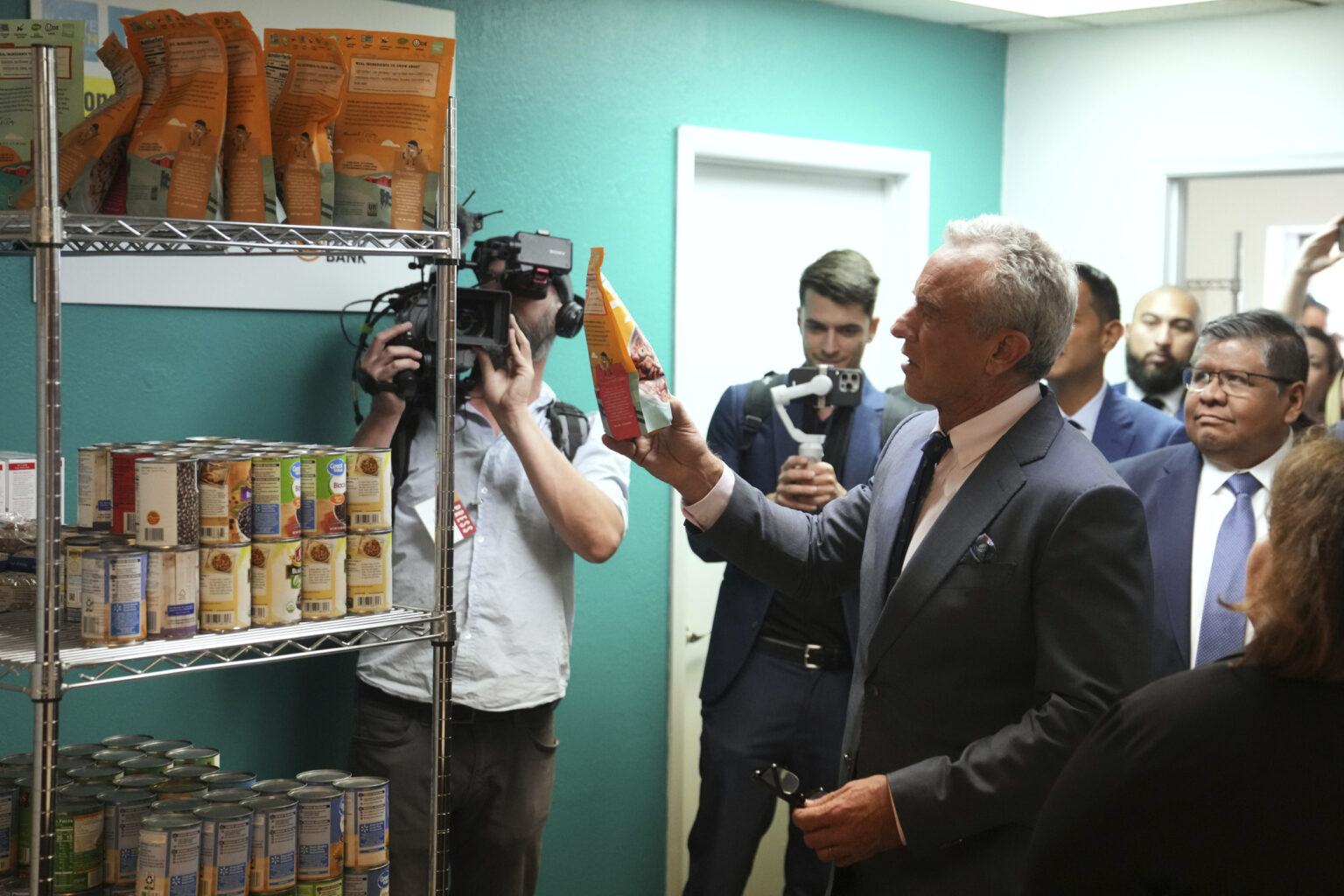The Food and Drug Administration (FDA) has announced plans to phase out several petroleum-based synthetic food dyes from the U.S. food supply, a decision that could reshape grocery aisles across the nation.
Common snacks, cereals and beverages may soon appear less vibrant as companies reformulate recipes to comply with the new guidelines.
The move is part of a broader push by the Trump administration’s Health and Human Services Secretary Robert F. Kennedy Jr. to reduce Americans’ exposure to potentially harmful food additives.
The ban affects dyes Red 3, Red 40, Yellow 5, Yellow 6, Blue 1, Blue 2, Green 3, Citrus Red 2 and Orange B, which have long been used to enhance the visual appeal of processed foods. Their removal from products reflects growing concerns over the health risks associated with artificial colorants.
During a news briefing on Tuesday, Kennedy emphasized that federal agencies planned to collaborate with food manufacturers to eliminate artificial dyes from their products.
“I just want to urge all of you, it’s not the time to stop; it’s the time to redouble your efforts, because we have them on the run now, and we are going to win this battle,” Kennedy told supporters of the “Make America Healthy Again” movement. “And four years from now, we’re going to have most of these products off the market, or you will know about them when you go to the grocery store.”
Why Are the Food Dyes Being Phased Out?
“For the last 50 years, American children have increasingly been living in a toxic soup of synthetic chemicals,” FDA Commissioner Dr. Marty Makary said during the news conference announcing the policy change. The agency plans to revoke the authorization of these dyes and set national standards for transitioning to natural alternatives by the end of 2026.
Makary added, “The FDA will establish a standard and timeline for industry to switch to natural alternatives, revoke authorization for dyes not in production within coming weeks and take steps to remove remaining dyes on the market.”
Kennedy, a vocal critic of food additives, underscored the broader mission of his “Make America Healthy Again” campaign: “If they want to eat petroleum, they ought to add it themselves at home.”
Which Items Contain the Food Dyes Being Phased Out?
The ban targets dyes commonly found in many popular foods and beverages. Here is a breakdown of the affected dyes and some of the products that contain them:
- Red No. 3 (Erythrosine): Found in candies, snack foods, maraschino cherries and fruit cocktails. The Center for Science in the Public Interest described it as a carcinogen in laboratory animals.
- Red No. 40 (Allura Red AC): Found in Kool-Aid, Starburst and NyQuil. Research has shown it may increase hyperactivity in children and cause allergic reactions.
- Yellow No. 5 (Tartrazine): Present in Mountain Dew and Twinkies. It has been linked to DNA damage and inflammation.
- Yellow No. 6 (Sunset Yellow FCF): Found in Airheads, Jolly Ranchers and Lucky Charms. Studies suggest links to neurobehavioral issues.
- Blue No. 1 (Brilliant Blue FCF): Used in M&M’s and Takis, with potential links to kidney tumors in animal models.
- Blue No. 2 (Indigo Carmine): Found in Skittles and blueberry Pop-Tarts, with research suggesting higher rates of brain tumors in rats.
- Green No. 3 (Fast Green FCF): Present in canned peas and sherbet, linked to bladder tumors in rodents.
- Citrus Red No. 2 and Orange B: Used for coloring orange peels and sausage casings, respectively, and both have potential carcinogenic risks.
Kennedy and Makary encouraged companies to explore natural alternatives, such as beet juice or carrot juice. “For companies that are currently using petroleum-based red dye, try watermelon juice or beet juice. For companies currently combining petroleum-based yellow chemical and red dyes together, try carrot juice,” Makary said.
Despite resistance from some industry groups warning of supply chain disruptions, the FDA’s decision aligns the U.S. with international standards. “Their only purpose is to make food companies money,” said Dr. Peter Lurie, the president of the Center for Science in the Public Interest. “Food dyes help make ultraprocessed foods more attractive, especially to children, often by masking the absence of a colorful ingredient, like fruit.”
As companies adjust formulations, consumers may notice changes on store shelves. “This marks a new era in safe food for children,” food activist Vani Hari said.
Will Food Companies Agree to Phase Out Food Dyes?
The FDA’s plan to eliminate synthetic food dyes hinges not on formal regulation but on an “understanding” with major food companies that they will voluntarily reformulate their products. “We don’t have an agreement; we have an understanding,” Kennedy said during the announcement, emphasizing the cooperative approach being taken with industry leaders.
Makary reinforced this strategy, saying: “We’ve had wonderful meetings with the food industry. They are eager to do it.” He added that there were no immediate plans for new regulations to enforce the move as “there’s no need to have a regulation or a statute when companies are volunteering to do it.”
Not all stakeholders share the administration’s optimism. The International Association of Color Manufacturers, representing the additives industry, warned that the proposed timeline of the end of 2026 “ignores scientific evidence and underestimates the complexity of food production,” raising concerns about potential supply disruptions and limited access to familiar grocery items.
Read the full article here

